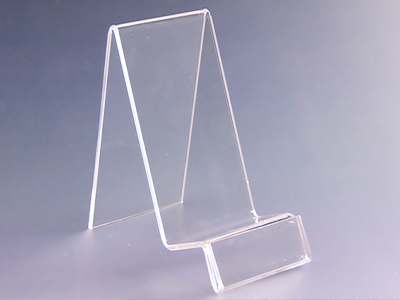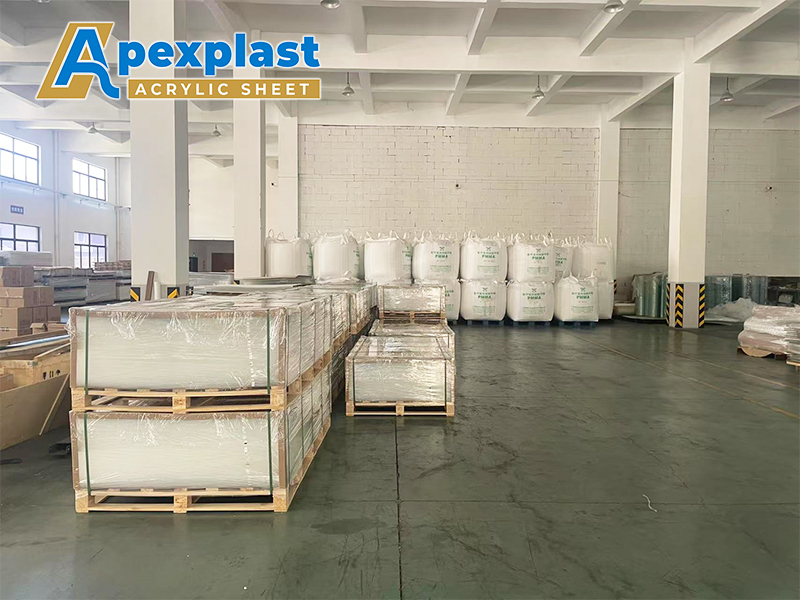Common Processing Techniques and Application Scenarios of Acrylic Sheets
Acrylic (PMMA), also known as plexiglass, is widely used in advertising, decoration, construction, and industrial manufacturing because of its high transparency, good weather resistance, and excellent processing performance. Many of the lightbox panels, display racks, electronic panels, trophies, and aquariums we see every day are made from acrylic sheets through different processing methods.
To help customers better understand the processing characteristics and application scenarios of acrylic materials, the following sections introduce the most common processing techniques, along with real usage examples. We also share practical production experience from Apexplast (Shanghai) Co., Ltd., offering more valuable insights for users.
I. Common Processing Techniques
01 Cutting
Cutting is the first and most essential step in acrylic sheet processing. Different methods can be selected based on application needs.
1. Laser Cutting (High precision, clean finish)
Laser cutting offers smooth edges, fast speed, and excellent performance with complex shapes—often without the need for secondary finishing.
Note:
• High-adhesion film is recommended to protect the surface during cutting.
• Adjust power properly for thick sheets to avoid yellow edges.
2. Engraving & Cutting
Suitable for fine patterns, detailed shapes, or deep engraving.
Note: Excessive tool heat may cause burns or cracks, requiring experienced machine adjustment.
3. Saw Cutting
Low cost and ideal for large-sheet division.
Note: Accuracy is limited and not suitable for precision parts.

02 Bending
Acrylic cannot be cold-bent; it must be heated before bending.
Notes:
• Insufficient temperature → cracks
• Excessive temperature → yellowing or deformation
Commonly used for display brackets, logo letter structures, and lightbox profiles.

03 Polishing
Polishing is required when clear, smooth edges are needed.
1. Mechanical Polishing
Methods include flame polishing and buffing.
Note: Pressure and rotation speed must be controlled to avoid rippling.
2. Chemical Polishing
Used for parts requiring high optical clarity, such as display products or optical components.

04 Bonding
Bonding is essential for making display boxes, aquariums, and stands.
Notes:
• Bonding surfaces must be clean and dust-free
• Hard-coated sheets require surface treatment
• Adhesive selection must match thickness and purpose
• Large structures require longer curing time

05 Printing
Printing adds visual elements such as graphics and functional markings. Common for electronic panels and signs.
Two typical methods:
• Screen printing – cost-effective, good for single-color designs
• UV printing – fast curing, strong adhesion, supports full-color images
Note: Hard-coated sheets require ink adhesion testing.

06 CNC (Computer Numerical Control) Machining
Ideal for complex structures, 3D forms, and precise panels.
Advantages:
• High accuracy
• Suitable for mass production
Disadvantage:
• Higher initial programming cost
II. Apexplast Acrylic Sheets: How Production Quality Affects Processing
In real manufacturing, sheet quality directly influences cutting results, polishing clarity, bonding strength, and overall output.
As a professional acrylic sheet manufacturer, Apexplast (Shanghai) Co., Ltd. has accumulated extensive experience:
• Imported high-grade raw materials, with 92%–93% light transmittance
• Stable hardness and density, reducing yellowing during laser cutting
• Low internal stress, allowing clean bending without whitening
• High surface flatness, ideal for UV printing and precision panels
• Low bubble rate during bonding—advantageous for display boxes and aquariums
Apexplast, a subsidiary of the ODS Group, offers cast sheets, extruded sheets, mirrored acrylic sheets, and more. All products meet GB 7134-1996, SGS, and RoHS standards, ensuring reliable performance in advertising, decoration, furniture, and construction.
The factory provides multiple sizes, colors, and thicknesses, supports OEM customization, and meets the needs of distributors, processors, and brand clients.

III. Main Application Scenarios of Acrylic Sheets
1. Advertising & Display
• Lightbox panels, illuminated signs
• Wayfinding signs, company logos
• Display racks and showcases (cosmetics, jewelry, electronics)
• POP signs and price holders
Apexplast sheets are widely used due to their high transparency and stable hardness.

2. Construction & Interior Decoration
• Skylights, canopies
• Mall and office partitions
• Decorative wall panels
• Furniture panels, cabinet doors
• Bathroom products (tubs, partitions)
Their high transparency, weather resistance, and anti-yellowing performance make them suitable for architectural applications.

3. Transportation
• Automotive lamp covers
• Motorcycle windshields
• Aircraft windows, boat windshields
4. Industrial & Electronic
• Machine guards
• Instrument panels
• LCD light guide plates
• Acoustic windows
5. Household Products
• Photo frames
• Storage boxes
• Fruit trays
• DIY decorations
6. Medical Field
• Incubators
• Instrument trays
• Medical cabinets
7. Large Engineering Applications
• Aquariums and large fish tanks
• Acrylic swimming pools and viewing windows
• Trophies and awards
• Architectural models and sand tables


